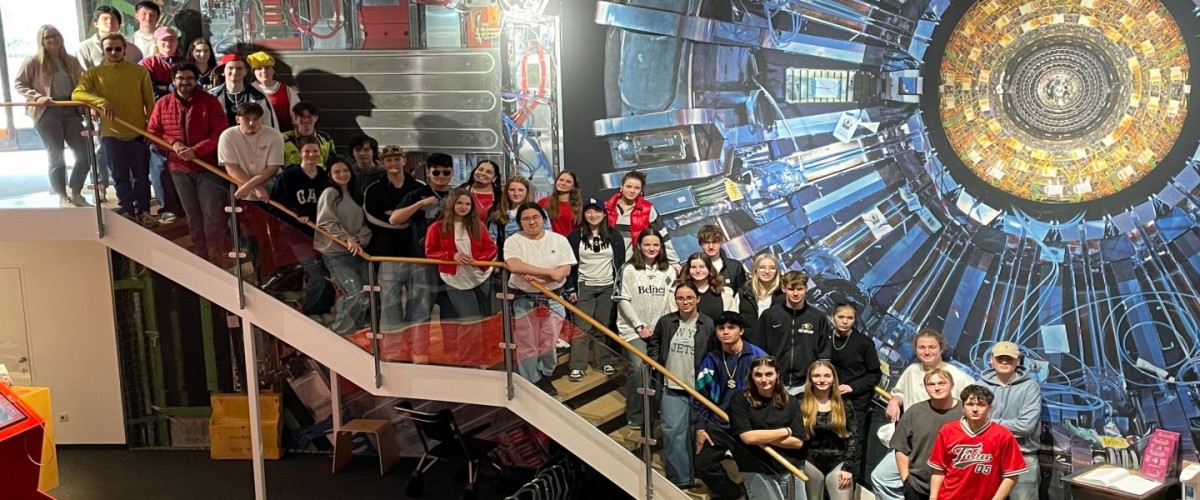Recently, two of the Q2 English Advanced Courses had the opportunity to experience Artificial Intelligence (AI) first-hand at the Deutsche Museum and learn about its endless applications to our daily lives. Coincidentally, the excursion took place in the „Mottowoche“, which meant that we were in a very cheery mood as it was our last week of high school. Dressed as 90s-era rappers and fueled by the multivitamin juice we had been sipping all day, the students embarked on this enlightening journey into the realm of AI.
After leading us through the museum hallway, the guide posed a thought-provoking question: “What is intelligence?” After he explained to us how human intelligence operates in three main steps: perception, processing and action. He specified how these steps could be replicated by machines to eventually perform tasks similar to humans.
We then delved into how AI processes visual data using a camera instead of eyes. Objects were put in front of a camera, and the AI identified what it was by comparing it to photo samples in its database. For instance: If the developers wanted to train the AI to recognise an apple, they would feed it hundreds of thousands of photos of apples in different angles, lighting and backgrounds. Based on this plethora of data, the AI would try to recognise patterns that are similar across the photos and mark them as typical for apples. When the AI is tasked with recognising an apple, it breaks the image it is given into patterns, and compares these to the patterns of all the samples inside the database, “apple” being one of them. The more similar the patterns to those of the sample “apple”, the higher the likelihood that the given image is indeed an apple.
However, a major potential flaw of AI is its complete reliance on the data it is fed. An example we had was the African elephant. The AI was not able to recognise an African elephant correctly because all the data came from pictures with backgrounds of a savannah. Now that the background was completely white, the AI could not tell that it was not an Indian elephant but indeed an African elephant.
After the theoretical showcase of how AI works, we went downstairs to experience AI in practice and most importantly play a bunch of AI-related games. There was Geo-guesser against AI, a Deepfake generator, and a very interesting game where AI would try to recognise drawings. We also used a photo generator and came up with some unrealistic, but funny prompts.
After playing the games for a while, we suddenly remembered that there was a car driving simulator upstairs. We all hurried to play this game in which we killed a lot of innocent civilians. This was a valuable lesson in how AI could save lives.
In conclusion, it was a lovely experience, and we all gained valuable insights into AI during our final school trip. Because of the interactive offer at the Deutsche Museum, we definitely recommend visiting the exhibition.
by Kolya & Robert




